As a cinematographer, Michael Slovis has lensed 30 episodes of Breaking Bad, including standouts like “Fly,” “Face Off,” and “Ozymandias.” As a director, he helmed four more. Last year, thanks to what he calls “the mutual adoration society” between Breaking Bad and Game of Thrones, he landed a gig directing the first two episodes of Thrones’ fifth season. We spoke to Slovis about some of his (and our) favorite scenes from Sunday night’s season premiere.
In the episode’s prologue, flashbacks show a young Cersei Lannister visiting a woods witch to learn her future. As the fortune-teller warns her, “Everyone wants to know their future, until they know their future.”
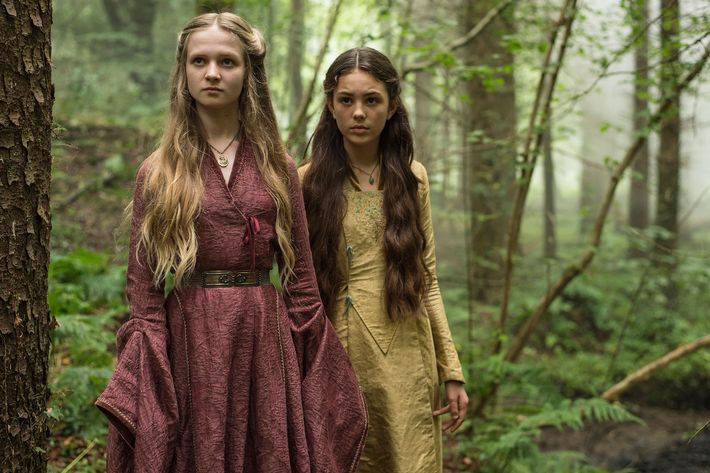
“One of the great ways to tell a story is to open up a scene with a question: Why are you showing me this? And then, gradually, you answer it. If you come in knowing exactly what’s going on, it tends to not be engaging for the audience. To open up on these two girls whom we’ve never met before, it’s a question: Who are they? We have no idea. The clues are there — Maggy the witch starts throwing out the number of children she’ll have, and telling her she’ll marry the king — but it all happens so quickly that even some very astute devotees of the show were not able to do the calculus and figure out who it was. Good storytelling requires that you be deceptive, right to the last moment.”
In Meereen, a group of Unsullied tears down the harpy statue from the Great Pyramid. Their leader is White Rat, who will soon meet an unfortunate end.
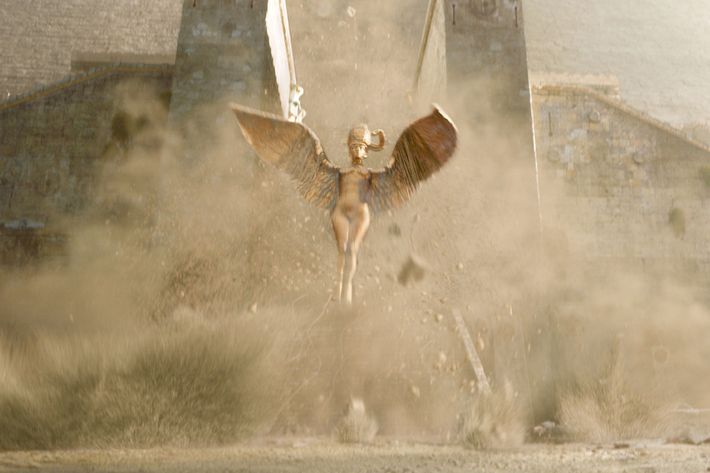
“I landed on introducing Meereen with that image because I wanted to do a seamless transition from Cersei. In the original script, Cersei is looking out from the balcony after Tywin’s funeral, and I wanted to give the illusion that we were seeing what she was seeing. So we look at her looking out, then we see sky, but what are we looking at? Then we see the harpy — why is the harpy coming towards us? Lo and behold, we’re looking at the thing being torn down from the top of the pyramid. Then we get that character beat for White Rat, which came from David and Dan, to show how pleased the Unsullied were with themselves, and we as an audience are like, Yeah, right on! The images of the old regime are gone and now we’re happy, but that’s very short-lived for that guy.”
“When [producer Frank Doelger] and I were chatting about the scene, we were looking for examples of icon removal, and we hit upon [the image of pulling down the Saddam Hussein statue in Iraq]. I don’t know if it’s a political commentary, but visually, it’s something we talked about.”
Tyrion journeys across the Narrow Sea in a series of POV shots that recall Slovis’s work on Breaking Bad.
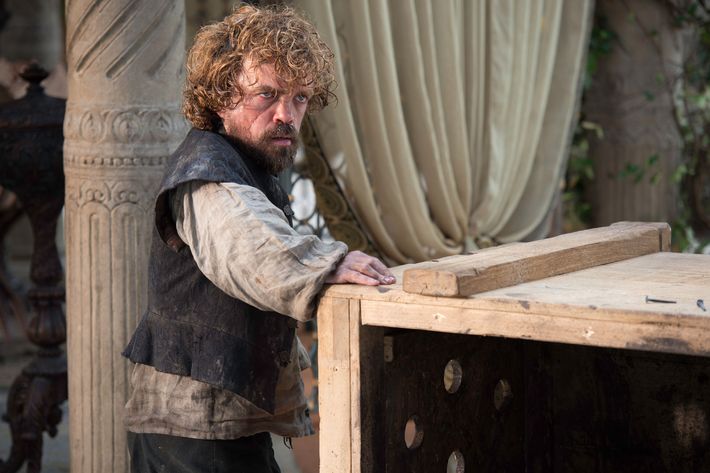
“It’s funny that you say that [it resembles Breaking Bad]. I never even thought of that before. The POV shots were actually in the script. The idea of using the transitions between the shots was something that we came up with after a little bit of experimentation. We literally just carried around a wall with those holes in it, and everywhere we went, we shot a little bit of Tyrion’s POV so we were able to capture the idea of traveling from one land to another.”
Jon visits Mance Rayder in his prison cell to convince him to bend the knee to Stannis.
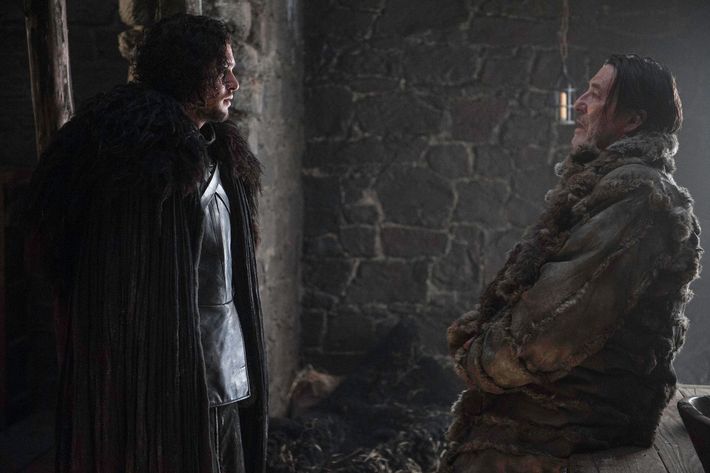
“This scene was like going to the theater for me. I felt honored to be in the space with those two actors. It’s so relatable. Here you have two guys who are both good guys, who respect each other and care about each other, and yet they can’t come to a consensus to save Mance’s life. It’s just a beautiful scene. The interesting thing is when Jon is basically begging for Mance’s life, telling him there’s no dishonor in living. Mance’s response is my favorite line in everything I did on Game of Thrones: ‘The freedom to make my own mistakes is all I ever wanted.’ It’s profound. Every single human on Earth could make that statement, and it would be honest and true.”
In the episode’s final scene, Mance is burned at the stake.
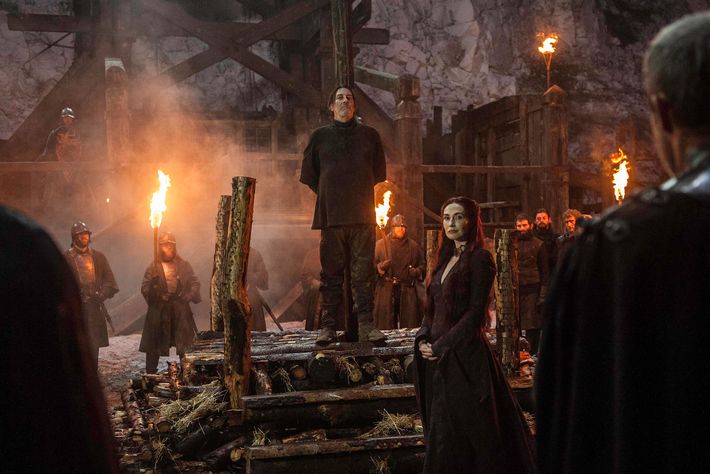
“This scene was logistically very challenging because we did not have a lot of night. The actual burning on the stake was big, but if you really analyze it, it’s a series of simple shots. The most complicated shot is the first shot. It starts with Mance stepping out of the door and then pulling back, so you see the entire Castle Black courtyard. I wanted it to start as close as we can on him, and I wanted it to end on a beautiful, big, impressive moment. It took a lot of rehearsals, but our camera operator Sean [Savage] made it happen. It took getting the crane the exact right spot, and once you put a crane that big there, space goes away very, very quickly. We ran the full length of the arm of the crane on that shot. When we got it, my hairs stood up on my arms. It was so great.”
“It’s really interesting, because there’s very little special effects. That scene was done the old-school way, by putting fire bars in front of the camera, and making it look way more dangerous than it ever was. Ciarán [Hinds] was never even in any danger of being burned. I wanted him to be so comfortable that he was not even thinking about the fire, that he was free to do his work. That scene is sold through Ciarán’s face and eyes. If we don’t care about that person that’s up there, then it’s all for naught. One of the notes that David [Benioff] and Dan [D.B. Weiss] gave me was, ‘Speak with Ciarán about honor.’ Honor only gets you so far. Honor gets you to the point where it’s all theoretical, but when there’s fire on your pants, there’s going to be a reality check. At that moment, does Mance think, Dammit, I should have bent the knee? On a show where so many people have lost their heads, boiling it down to that human moment — I think Ciarán gave us that in spades.”
This interview has been condensed and edited.





